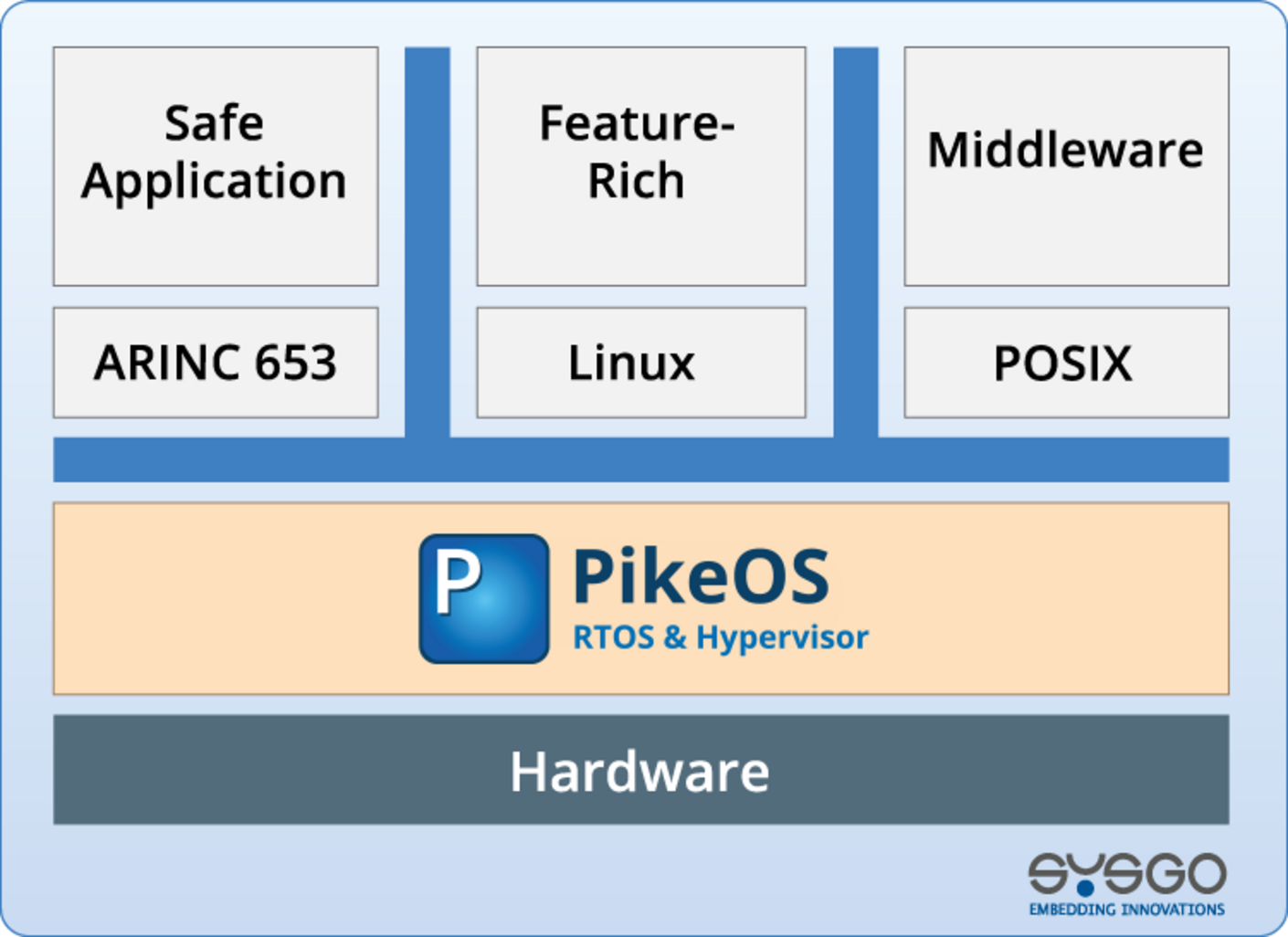Each partition has its own CPU time, memory, and I/O access
Faults in one application do not affect others
Time-critical tasks are fully deterministic
Resources are allocated securely via a robust scheduler and IOMMU support
Automotive
Combine an AUTOSAR control stack with a Linux-based infotainment system in a car ECU.
Aerospace
Host both a legacy RTOS and a secure POSIX-based application in an Avionics system.
Industrial IoT / Edge Computing
Consolidate industrial control software and a Cloud-connected monitoring interface on a single IIoT Edge device.
Medical Devices
Isolate a real-time patient monitoring system from a non-critical user interface or connectivity module within a single medical device.
Efficient System Consolidation
Reduce hardware complexity by integrating multiple applications—regardless of their criticality—on a single hardware platform. Save board space, weight and power (SWaP) without compromising Safety or performance.
Support for multiple Guest Operating Systems
Run a wide variety of guest OSs such as Linux, Android, Windows, POSIX, ARINC 653, or AUTOSAR. Each OS operates within its own partition, enabling safe coexistence and tailored functionality per application domain.
Safe Reuse of Legacy and Open-Source Software
Preserve existing software investments by migrating legacy applications into secure partitions. Open-source components can be reused safely without impacting certified software or exposing sensitive data.
Strict Separation for Mixed-Criticality
PikeOS ensures that Safety-critical, Security-critical, and non-critical components are strictly isolated. Partitions enforce strong temporal and spatial separation, enabling certification to strict standards like DO-178C (Avionics) or ISO 26262 (Automotive).
Faster Time-to-Market and easier Certification
Streamline development and certification processes through pre-certified components, ready-to-use certification kits, and deterministic partitioning. Focus your effort only where new development occurs.
Flexible Hardware Independence
Abstract software from hardware dependencies. PikeOS supports a wide range of architectures (ARM, x86, RISC-V, PowerPC), making it easy to scale, migrate, or port systems across different SoCs or vendors.
Robust intellectual Property and License Management
Protect proprietary software and isolate licensing domains. Partitions enable a clear legal and technical boundary between open-source and commercial intellectual property, reducing compliance risks.
Real-Time Performance and Determinism
Ensure predictable execution for time-sensitive applications, even when running alongside less critical tasks. PikeOS delivers low-latency context switching and real-time scheduling across multiple cores.

